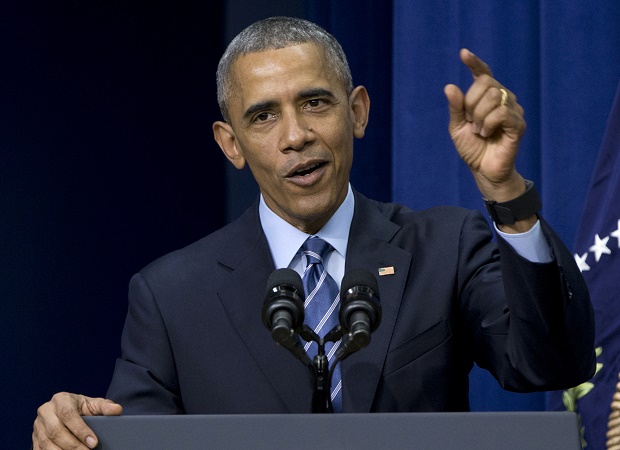US turns to implementation of Iran nuclear deal

In this Aug. 6, 2015 file photo, President Barack Obama speaks in the South Court Auditorium in the Eisenhower Executive Office Building on the White House complex in Washington. AP FILE PHOTO
WASHINGTON, United States—As time ran out for US lawmakers to halt the Iran nuclear deal Thursday, officials in Washington turned their attention to ensuring that Tehran lives up to its side of the bargain.
Senior administration officials said the “ball is in Iran’s court” as it seeks to convince the international community its nuclear program has been halted, just short of the threshold of producing an atomic weapon.
READ: White House clinches support for Iran nuclear deal
President Barack Obama and Secretary of State John Kerry marked the change in focus by naming a senior diplomat, Stephen Mull, as coordinator of the US effort to verify the implementation of the deal.
And, as the 60-day period which Congress had to study the deal expired without skeptical lawmakers having been able to derail it, Obama dropped in to the State Department to congratulate the team.
“It is vitally important that we now have the right team with the right leader in place to ensure the successful implementation of the Joint Comprehensive Plan of Action,” Kerry said, announcing Mull’s appointment.
READ: Democrats clinch enough votes for Iran nuclear deal
Mull’s team will be based at the State Department and include experts from several US economic, scientific, enforcement and intelligence agencies.
“There’s a lot that Iran needs to do before it can get the sanctions relief that we’re offering in the deal,” a senior US official said, citing a timeframe of “several months” before the agreement can be enacted.
“Iran needs to make major changes to its core nuclear infrastructure,” he said, starting on so-called adoption day—October 18—and continuing to “implementation day” somewhere down the line.
Thousands of nuclear centrifuges will be taken out of Iran’s Natanz enrichment facility and placed under the authority of the UN nuclear watchdog, the IAEA, in a lengthy process.
At the Fordow reprocessing site, Iran must remove two thirds of its centrifuges and the core of its Arak heavy water research reactor is to be pulled out and filled with concrete to render it inoperable.
Iran will also have to ship out the vast majority of its 12,000 kilogram stockpile of enriched uranium, to a third country, leaving only 300 kilos—starting on October 18—which could take months.
“It’s difficult for us to fully predict how long it’s going to be until sanctions relief is implemented, because we can’t offer that relief to the Iranians until they take all of these steps,” an official said.
October 18—’Adoption Day’
During the implementation period, the International Atomic Energy Agency will work with Iran to install technical monitoring systems and begin inspections.
“The IAEA has to verify that all these steps … before sanctions relief is offered,” he said. “So implementation day will be when the IAEA is in a position to verify that Iran has taken all those steps.”
After this point is reached, foreign countries and companies that had been barred by the US and some other international nuclear-related sanctions from dealing with Iran will be free to resume trade.
Some critics of the deal see this as a multi-billion dollar gift to the Tehran regime, but US officials insisted Thursday that the increased business would remain in the economic pipeline for years.
One senior administration official said the US would begin issuing waivers for companies wanting to deal with Iran on adoption day, October 18, but that these would not come into effect until implementation.
Meanwhile, US agencies and the European Union will begin the process of suspending their nuclear-related sanctions, but again only after Iran has been seen to have fulfilled its promise.
“On that day, if companies want to start buying Iranian oil, they can do that, but it will take time for Iran to start enjoying the full benefits of that,” the senior official said.
“Our Treasury Department estimates it will take until 2020 to get Iran’s GDP back to where it would have been today if these sanctions had not been ramped up as aggressively as they had been in 2012.”














